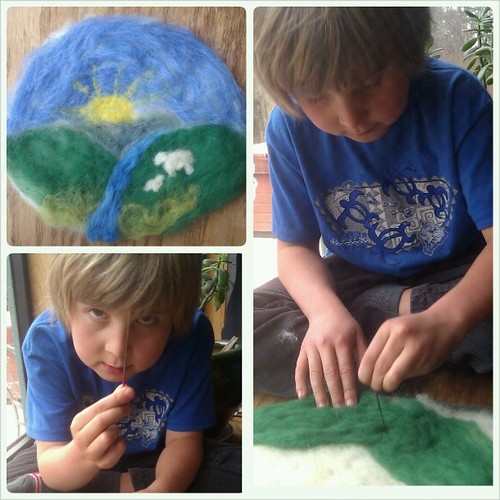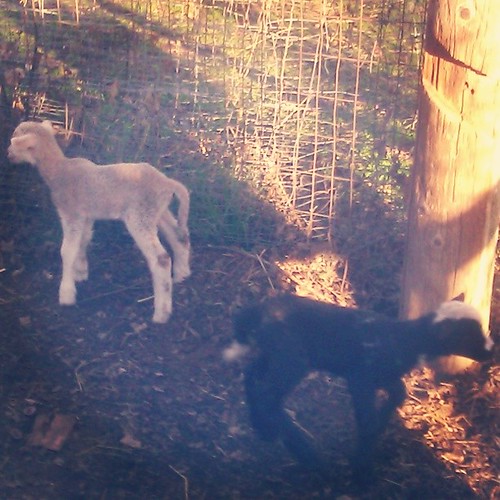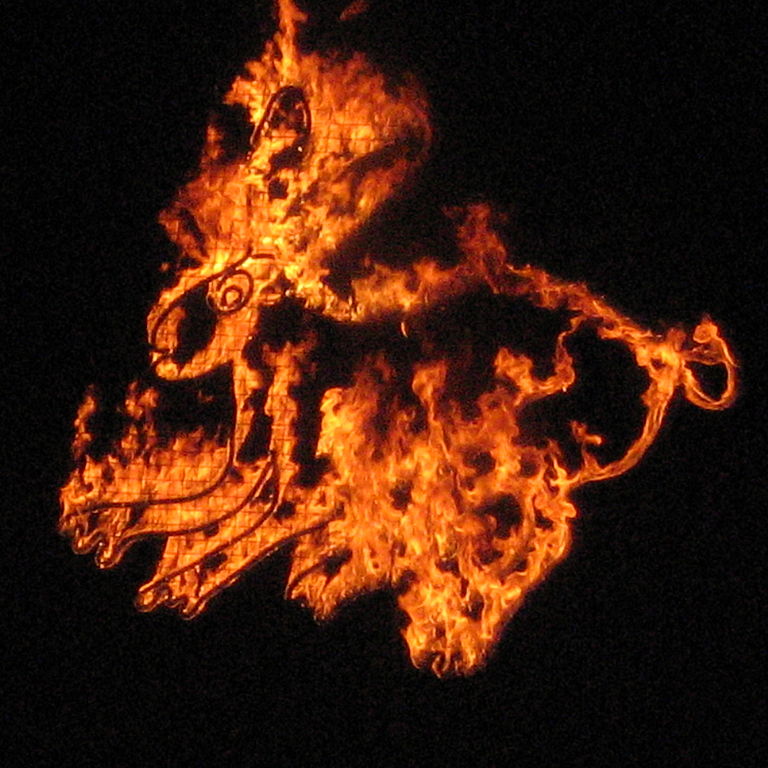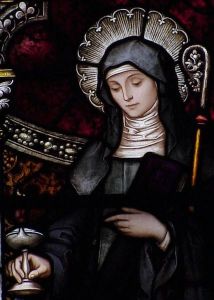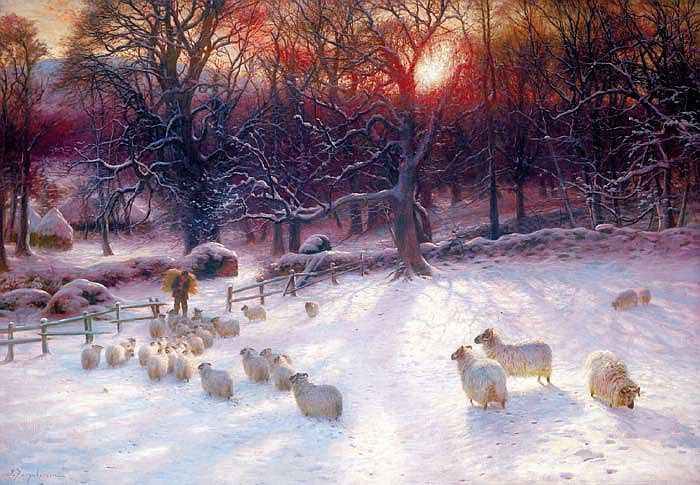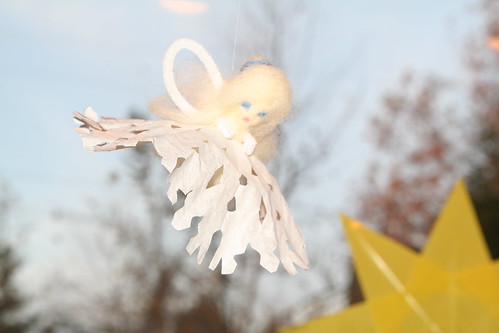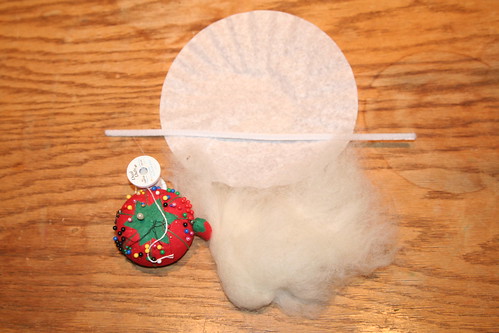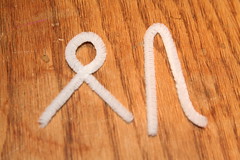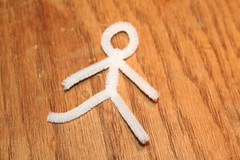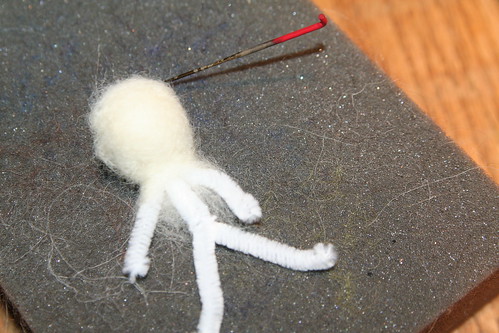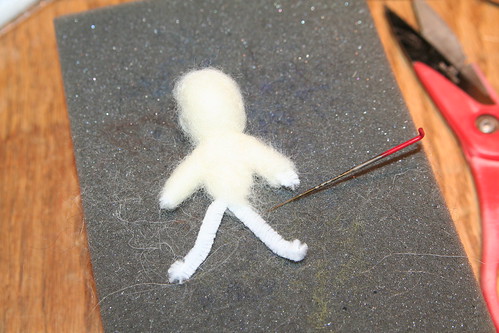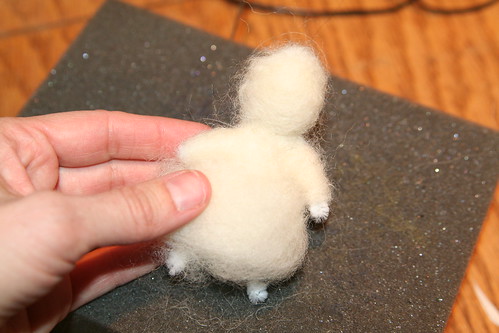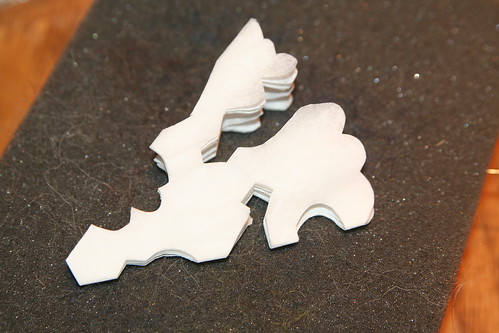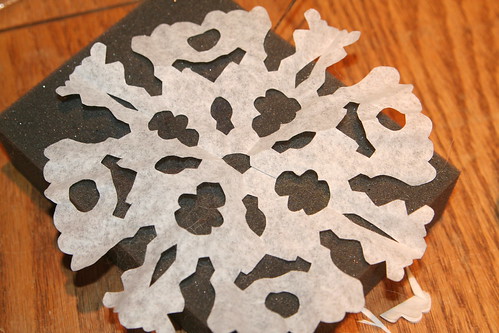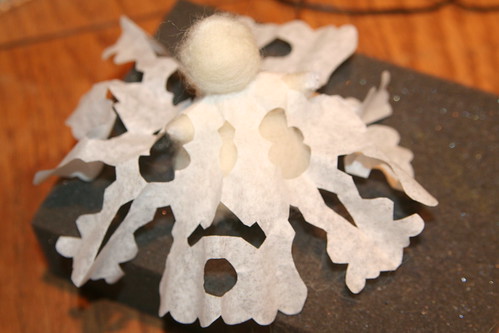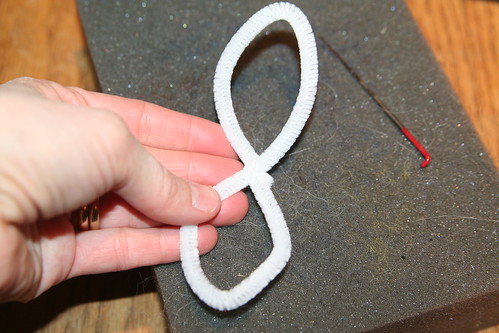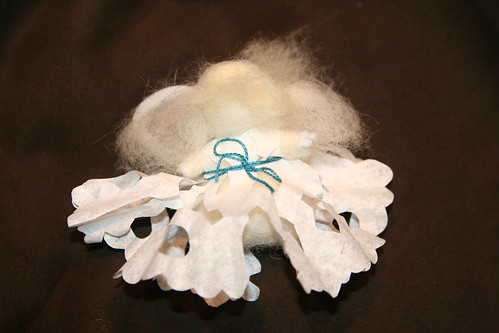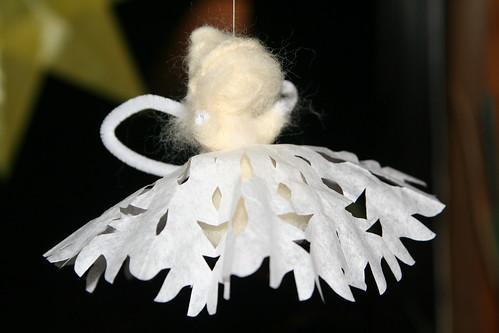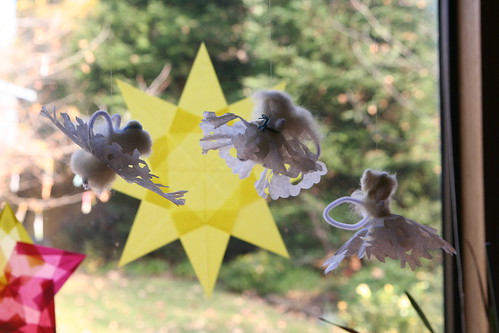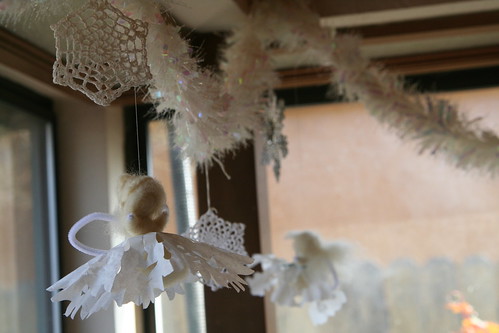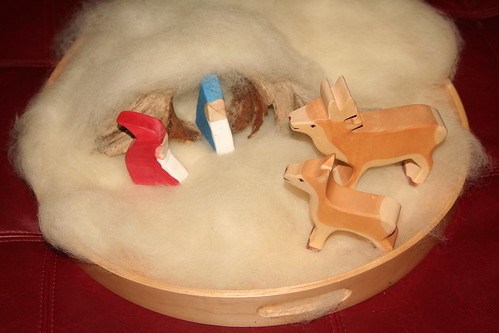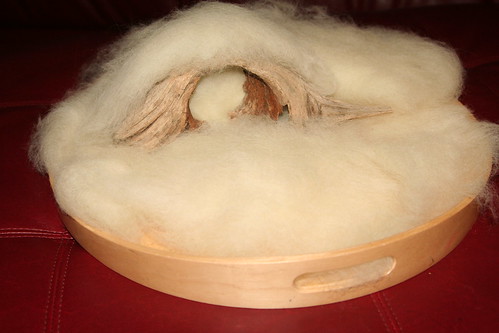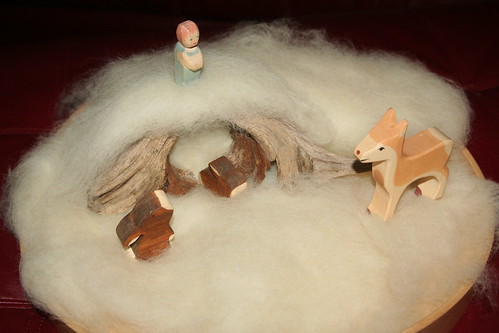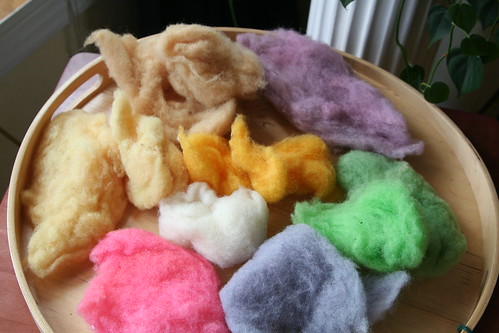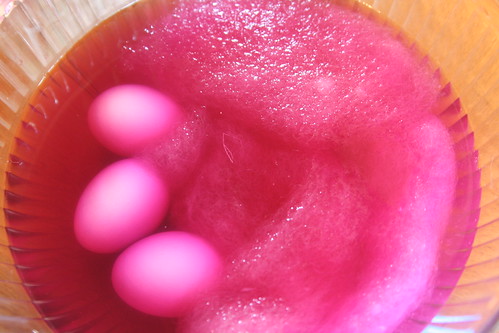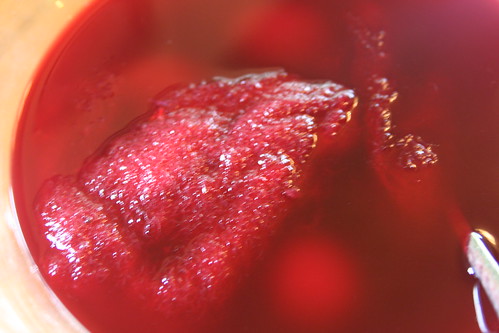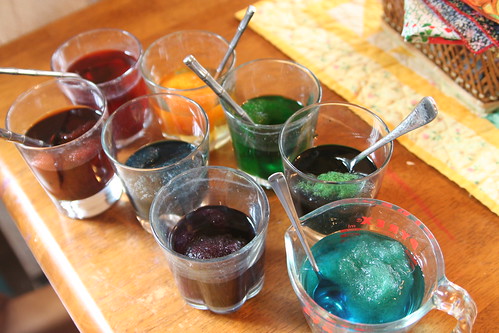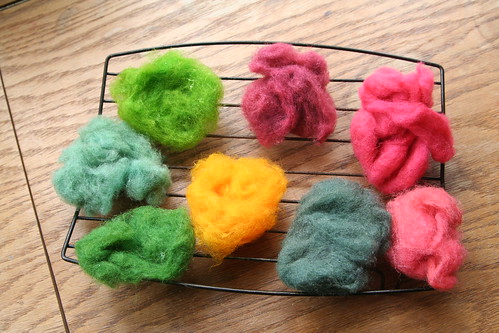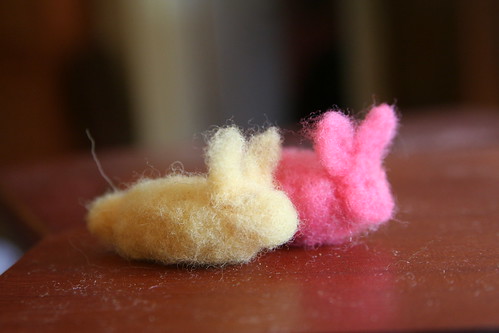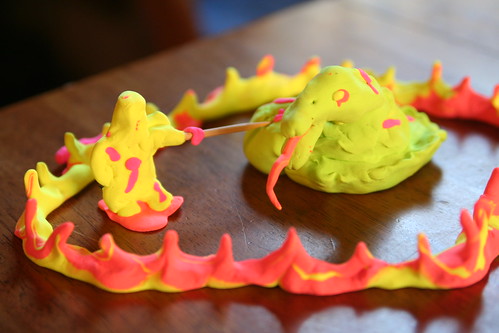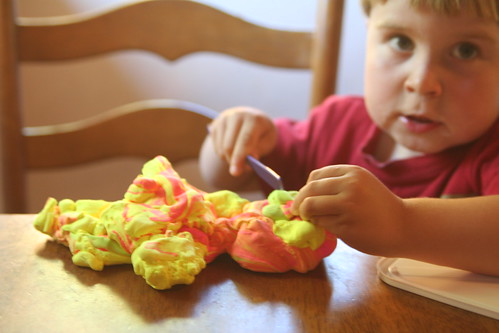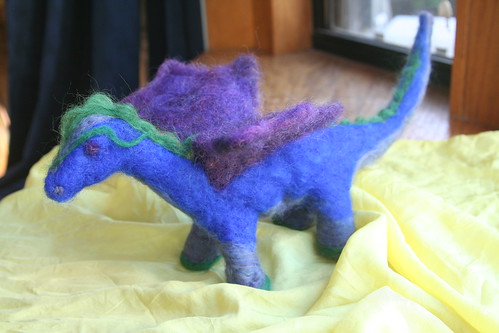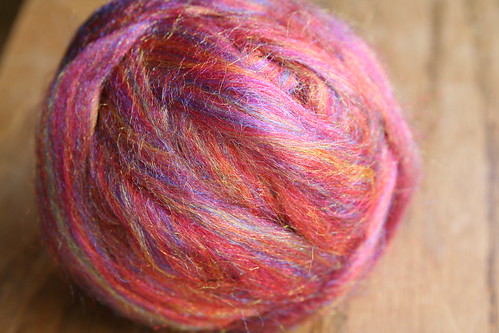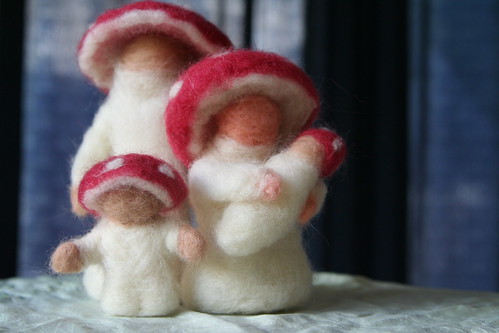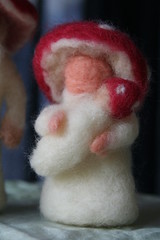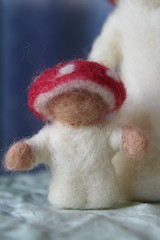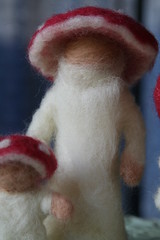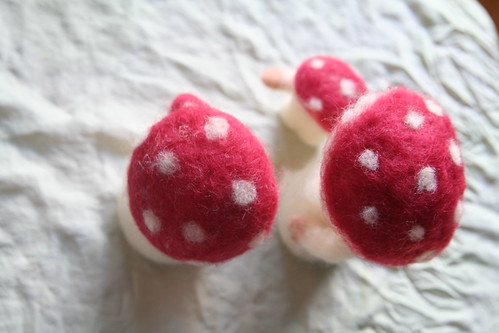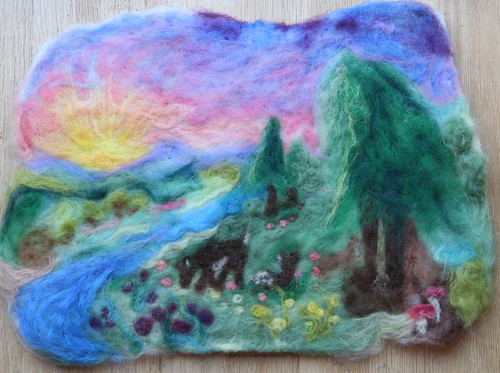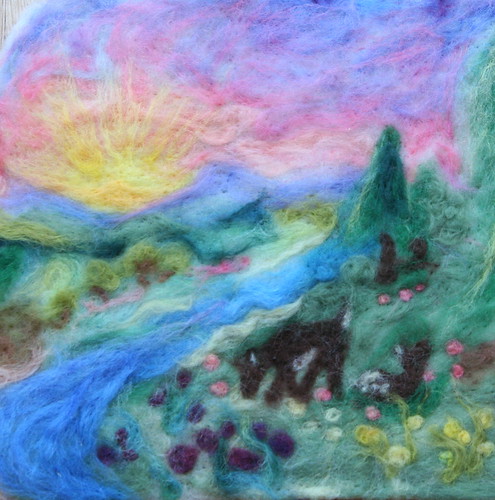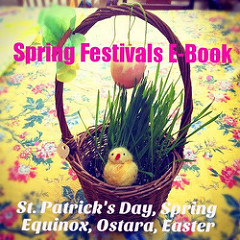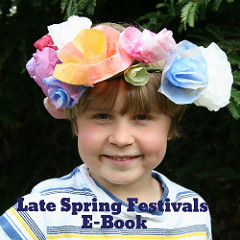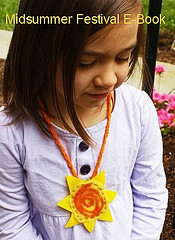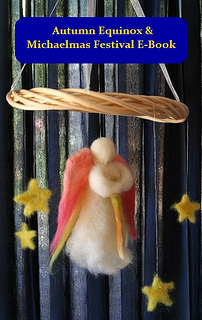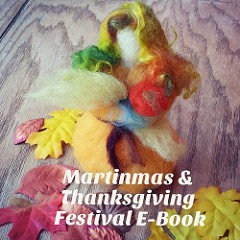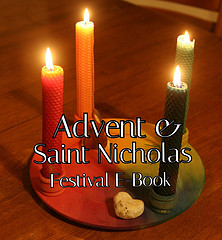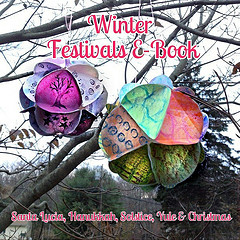Wool Painting for Imbolc
“If Candlemas Day be fair and bright, Winter will take another flight. If Candlemas Day be cloud and rain, Winter is gone and will not come again.”
This has been a weekend jam-packed with holidays and special events: Asher’s seventh birthday, Lunar New Year, Super Bowl today, and Imbolc, or Candlemas, and Groundhog Day. I have a post or two brewing, particularly Asher’s birthday celebration. Unfortunately, we’ve been pretty sick and down for the count for a couple of days.
Asher and I had some time this morning while Lucas and Ian were at basketball practice. We thought Imbolc would be a good time to bring out the wool roving and make something wooly and beautiful. There’s something soothing and lovely about the feel of warm, soft wool in your hands. Asher has never needle-felted before, but he was ready for it. We used a white wool base that I had felted into a rough oval at some time in the past. Asher got to choose the colors for our meadow scene. We worked together and I taught him how sharp and stabby the needle can be, and that we must be very careful. He seemed to enjoy the felting. It was fun making this little wool painting of sheep in a meadow with him.
Last week, one of the school sheep gave birth to two sweet lambs. We enjoyed a little bit of rain, too. These are some of the many blessings in our winter. What are your wintertime blessings?
Since today is quite fair and not rainy, I’m hoping that we have more weeks of (wet) winter ahead of us. We really need the rain.
If you’d like more info about this festival, I wrote about Imbolc last year here. And here is a little family ritual we did to focus on the hearth and home aspects of this Celtic holiday.
Happy Imbolc, or Candlemas, or feast day of Saint Brigid, Groundhog Day, or Super Bowl day! Whatever you do today, be sure to do it with people you love.
